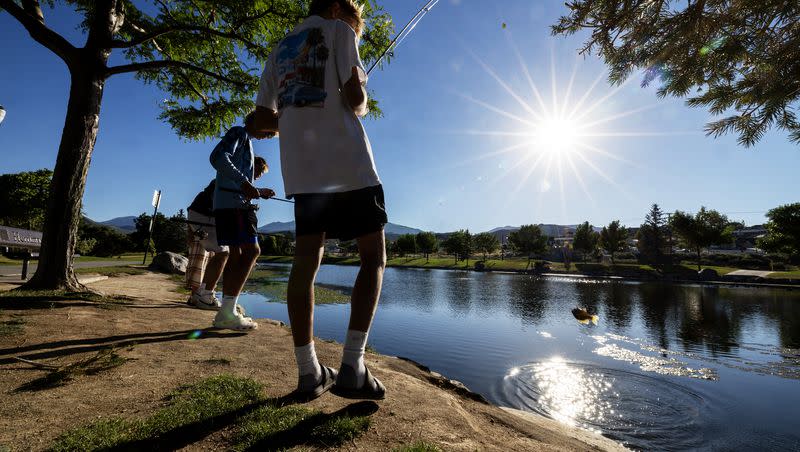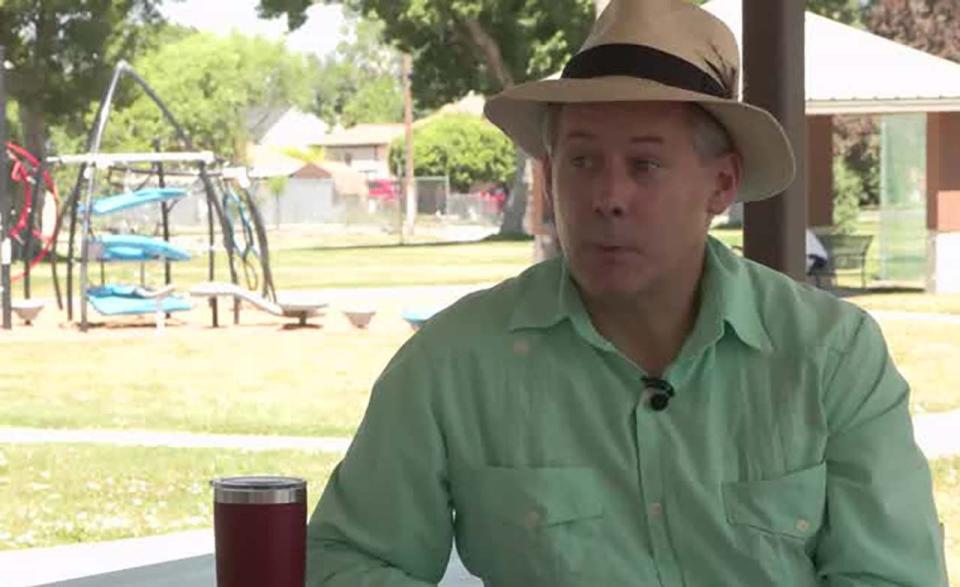Heat waves are getting worse, and more dangerous, lead volunteer in heat mapping study says

There is a growing amount of evidence to suggest that heat waves are the deadliest weather event, according to one Utah science teacher who is heading up a local heat-mapping campaign.
Rob Wilson said people often think the deadliest would be a hurricane or a tornado because of how devastating they are — but, in reality, heat waves are more common and cause many more deaths. Just like people are scared of sharks instead of sunburn, which is more deadly, at the beach, people don't always prepare for the heat. He said people are so familiar with sunburn they forget to be afraid of it, just like with heat waves.
There is a movement among meteorologists to name heat waves, to try to help people become more aware of them, similarly to the names given to hurricanes.

A heat wave is expected in Utah over the next few days, as the National Weather Service has issued an excessive heat warning.
Wilson, a science teacher at Rowland Hall, is part of a project to map heat throughout Salt Lake City neighborhoods. Together, with about 70 volunteers on Saturday — 35 of them driving and navigating — the group mapped 10 different routes during three different hours of the day. It will allow people to compare all of the neighborhoods in Salt Lake City with each other and, hopefully, avoid the dangers of heat waves.
"They're becoming more frequent, more intense, longer in duration and the season when they occur is longer. And that's attributable to greenhouse gas, heat trapping, gas emissions and global warming," Wilson said.
This week's heat wave is bringing many places in the southwestern United States into triple-digits temperatures. The National Weather Service has warned about near-record temperatures over the weekend, advising people to drink water and check on family members and neighbors.
The project Wilson and others are doing is part of a larger urban heat island mapping campaign run by the National Oceanic and Atmospheric Administration, which is mapping another 14 states this year.
The goal is to help reduce heat in some of the areas with the biggest problems. Wilson said the data may help the city get grants or funding to help plant trees, build a splash pad and replace roofs with lighter colors that will reflect heat into the sky instead of radiating it out. It will also help the city know what areas need more access to free places with air conditioning to give more people refuge from the heat — like at libraries and shopping centers.
"We're going to be able to identify the hottest areas of Salt Lake City and then look at opportunities to make it easier for ... people who live in those areas to cope with heat waves," Wilson said.
"The body needs a break from the heat during a heat wave. At some point during the day, you've got to get out of the heat."
The cars driven on the 10 routes Saturday, use sensors and satellites to identify where heat is the largest problem. The sensors track the time, location, temperature and humidity — which, together, create the heat index.
Wilson explained that areas with trees are cooler and areas with direct sunlight and heat-trapping surfaces get more of the dangerous heat.
The routes were covered at 6 a.m., 3 p.m. and 7 p.m. — Wilson said they are trying to get some readings from the hottest part of the day, as well as evening and morning hours, to see how quickly the areas are able to cool down and what the temperature is before the sun starts to heat the air.
He said the climate center at Utah State University asked to include Salt Lake City in the heat mapping project this year because during the last two summers the city has had record breaking heat and the project had not yet evaluated a city in Utah.
Wilson said people can't treat a day during a heat wave like any other day, because it is not safe to do outdoor work like yard work or road work. Even delivery drivers can be at risk. He said people will need to learn how to work differently during the heat.
He suggested some advice for dealing with dangerous heat waves:
• Getting a tune-up for your A/C system ahead of the heat.
• Make sure to have water available, and other hydration drinks that will help provide salt, as well.
• Check on neighbors and family to make sure they are getting a break from the heat.
• Be aware of community resources you can use to get out of the heat.
• Plan activities to be outside during cooler hours.

